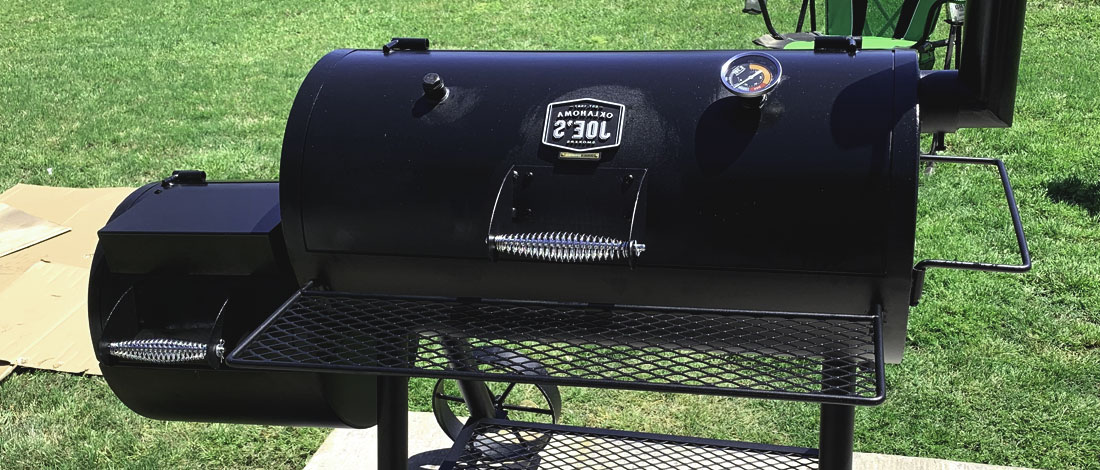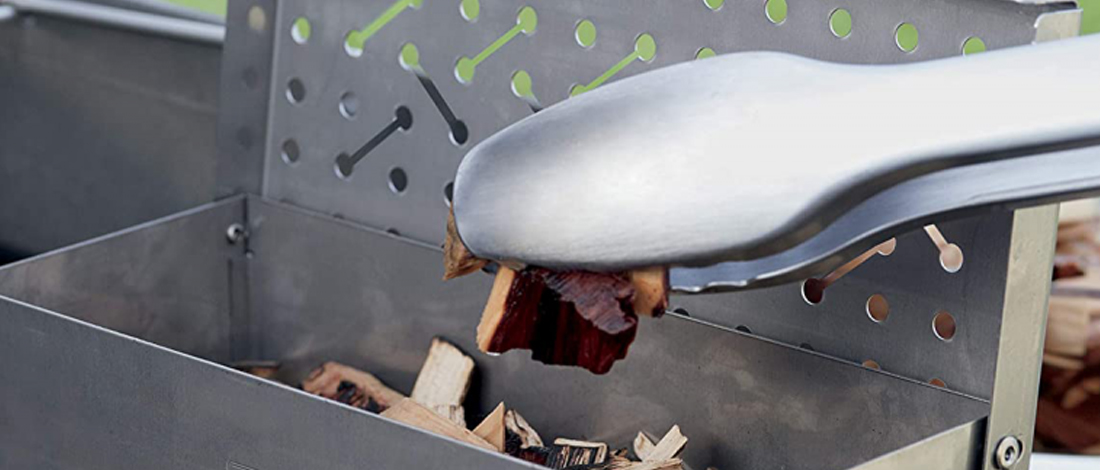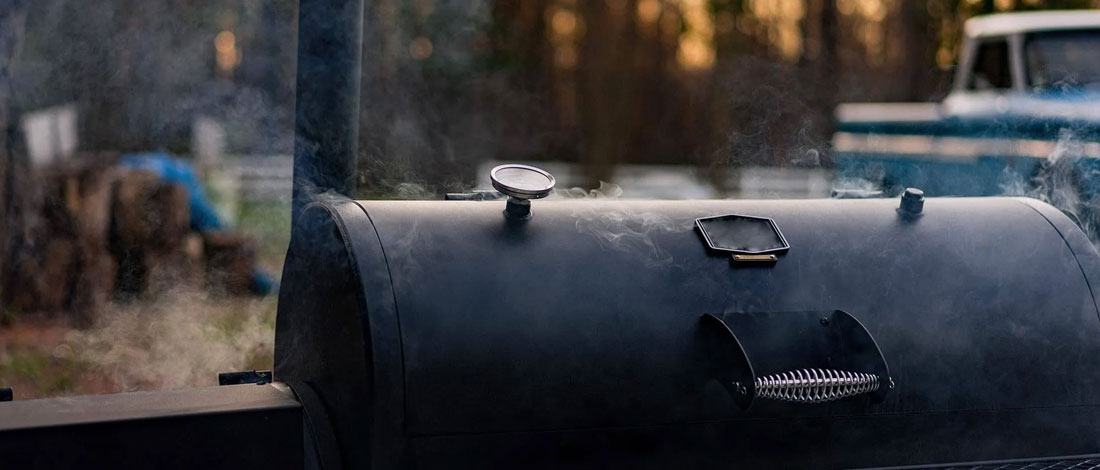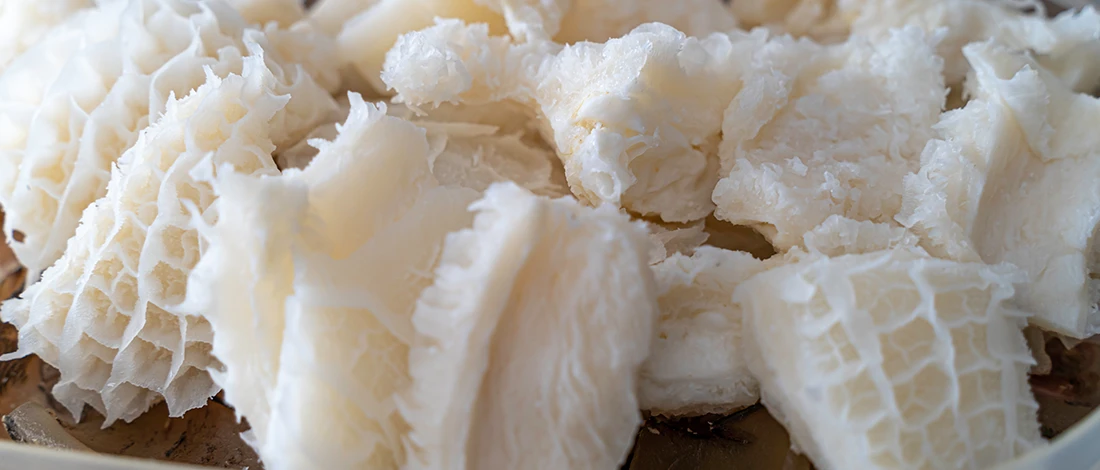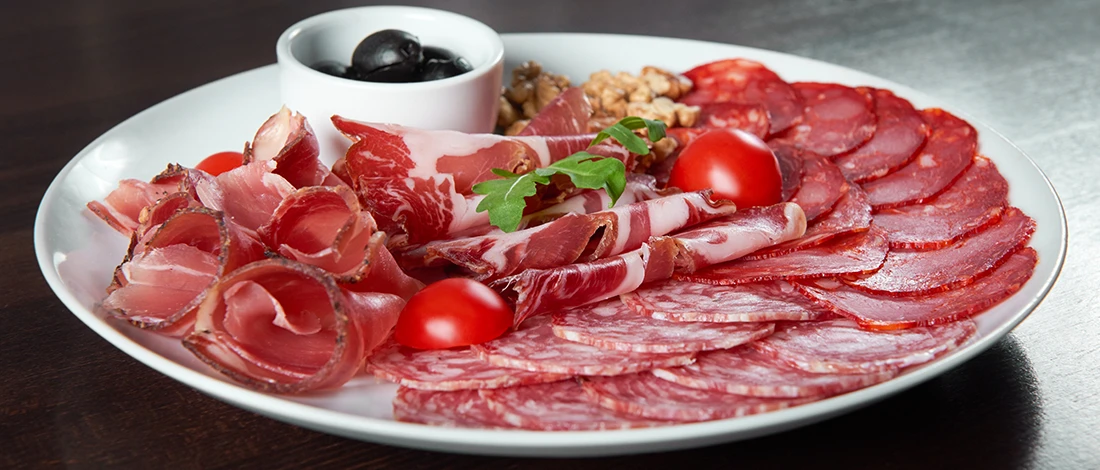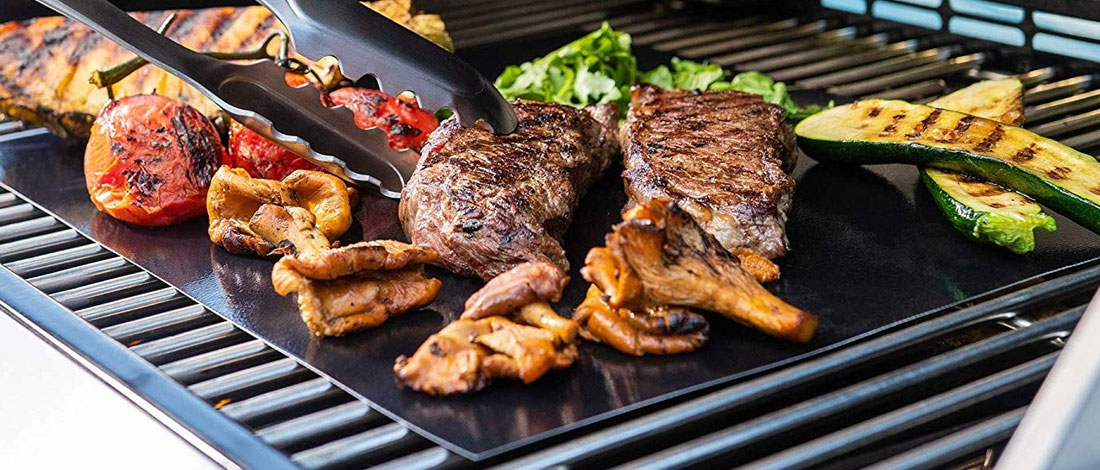If you're like me, then you probably love grilling. Ever since I got my first grill, I've been trying to make the perfect steak every time.
Different people have different preferences for how they want their meat cooked, but you always have to be careful not to undercook the meat in order to keep your food safe.
The secret is a good meat thermometer - this will ensure that your food is cooked properly no matter what preference your guests may have.
I have been grilling competitively for more than six years, and my instant-read thermometer is always part of my barbecue kit.
Digital thermometers have become the go-to kitchen tool because they are accurate, quick, and easy to use. They display the temperature quickly and accurately - just by pressing a button.
Quick Summary
- Insert the probe into the thickest part of the meat, avoiding bones and fat, and read the temperature on the digital display. Calibration and proper placement are key.
- A digital meat thermometer is used to measure the internal temperature of food, ensuring safety and accuracy in cooking.
- In a study assessing 1231 consumers' readiness to use food thermometers for small cuts of meat, researchers found varying stages of change towards adopting food thermometer usage, with a 41% return rate from general consumers and a 60% return rate from Cooperative Extension employees and volunteers involved in food and nutrition education [1].
- Using a meat thermometer helps prevent overcooked or undercooked meat, reducing the risk of foodborne diseases.
What Is A Meat Thermometer?
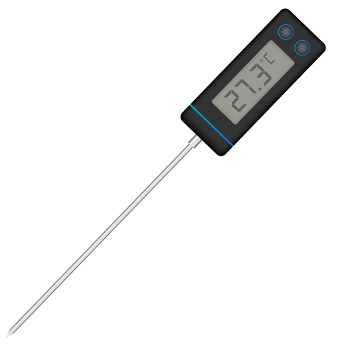
A thermometer is an instrument used to measure temperature. It measures heat energy and converts it into a number that can be read easily in the form of degrees.
A meat thermometer is a kitchen device that helps you to cook your food more safely and accurately, whether on the grill, stove or in the oven.
This type of meat thermometer has a probe that you insert into your food.
You can then monitor the temperature on the screen of the meat thermometer and know exactly when your meal is cooked just right.
The biggest advantage of a thermometer is the increased accuracy with which you can cook your food. This is because meat thermometers allow you to gauge the internal temperature of your food without cutting into it.
What Is The Purpose Of A Meat Thermometer?
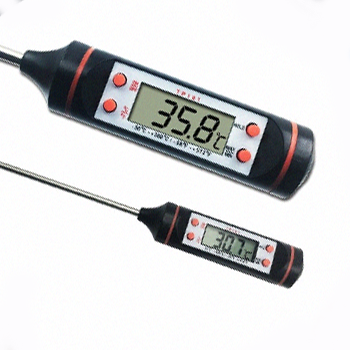
A meat thermometer is used to measure the internal temperature of a piece of meat. This allows you to prepare it thoroughly without ruining its natural flavors.
It's also known as an instant-read thermometer and is quick and easy to use.
However, it's important to make sure they're calibrated and used correctly or they can give you false information about your meal.
The reason to use this device is to prevent you from serving overcooked or undercooked meat, which can lead to food poisoning and other illnesses.
In fact, a thermometer in the oven can save your life. Cooking a meal to the desired temperature is important to avoid deadly health risks such as salmonella.
I think many cooks are afraid of undercooked meats. A good thermometer is a cook's best friend.
- Emeril Lagasse, Chef
There are several different kinds of meat thermometers.
Some can be left in while cooking and have an alarm when done. This way you can be sure your food is fully cooked to perfect doneness in the oven, but you do not need to check the thermometer manually.
Why Should You Use A Meat Thermometer?

Convenience
The probe can measure the temperature of any cut of meat without cutting into it. You simply insert it into the meat, no matter how thick, and press a button to get an accurate reading in seconds.
Though there are many ways to take a precise temperature, I would recommend a digital thermometer because it measures the temperature in seconds and there's no need to wait for a dial or needle that moves back and forth.
The meat thermometer provides instant and precise results, allowing you to grill your favorite dish without guessing. It even has an LCD screen that displays the numbers so you can easily read the results. This makes them far simpler to use than dial thermometers.
Food Safety
The most important reason to use a meat thermometer is for your food safety since uncooked meat is dangerous. According to the Centers for Disease Control and Prevention each year in the United States, an estimated 48 million people get sick from a foodborne illness, 128,000 are hospitalized, and 3,000 die, highlighting the significance of proper cooking of meat to avoid illnesses [2].
Some of the most common pathogens found in undercooked and uncooked meat are E. coli from ground meat, Trichinosis from pork, Salmonella from poultry, and Scrapie from lamb and mutton.
The diseases caused by these organisms can result in diarrhea, nausea, vomiting, abdominal pain, fever, and even death.
Digital instant-read thermometers are easy to use and will eliminate any worries about whether your food is cooked properly or not. It is much more precise than just watching the cook time and is a convenient way to check burgers, steaks, roasts, and chops.
How To Calibrate A Digital Instant Read Thermometer

A meat thermometer is an important tool for a pitmaster who wants to ensure that the meal they are preparing is cooked thoroughly, resulting in perfectly cooked meat.
However, if the thermometer is not registering an accurate temperature reading, it can lead to undercooked meat. Therefore, calibrating your thermometer every six months is critical to ensuring that it works properly.
To calibrate your thermometer, you will need to do two separate tests [3]:
Test One - Freezing Point
- Fill a glass with ice and add water to the top
- Stir and wait for three minutes
- Insert the thermometer probe into the ice water without touching the bottom or sides of the glass
- Wait five seconds and take a reading
- The thermometer should read 32 degrees
Test Two - Boiling Point
- Fill a pot with water and bring to a boil over a heat source
- Insert the thermometer probe into the boiling water without touching the bottom or sides of the pot
- Wait five seconds and take a reading
- The thermometer should read 212 degrees
Results
You may find that your meat thermometer does not give exactly the proper temperature in one or both of these tests.
If that is the case, locate the reset button found on most models and operate it per the manufacturer's instructions. Then, retest the probe and ensure that you are within two degrees of the expected reading.
Some digital instant-read thermometers do not have a reset button and cannot be recalibrated.
Since you cannot adjust the digital instant-read thermometer, simply record the actual reading of the two tests and compare those to what they were supposed to be. Find the average of the two, and add or subtract that from the temperature the next time you cook your meat.
How Does A Meat Thermometer Work?
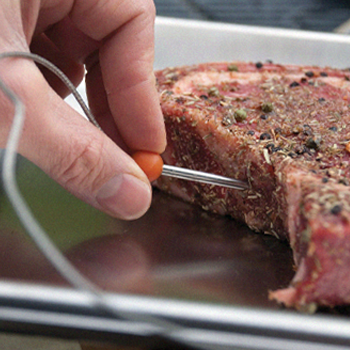
There are two main types of digital meat thermometers in use today.
The first of these is something called a thermocouple probe thermometer. A thermocouple probe has two wires of different metals running down its length.
As the temperature of the probe increases, the wires generate an electrical voltage. The electronics in the thermometer measure and convert this voltage to a temperature number which is read on display.
They often use this type of thermometer in professional kitchens because it generally provides quick and precise readings regardless of the heat source - oven, range, or grill.
An instant-read thermometer is your best bet for making sure that meat and fish are cooked to the proper temperature.
- Bobby Flay, Chef
The other thermometer most people use is called a thermistor probe thermometer. In this digital probe thermometer, an electric current is sent through a single wire in the probe.
As the temperature increases, there is a change in the resistance to the electrical flow. This probe resistance is measured and converted into a temperature reading.
This type of probe has a little more variation in its precision than the thermocouple does. In a thermistor, the quality of the materials makes a large difference in the accuracy, so you want to make sure you buy a good one.
Related Articles:
Using Digital Thermometers

To use a meat thermometer correctly is a simple process. It only takes three steps:
- Put the metal probe in the thickest part of the meat
- Do not let the probe touch bone or the heat source while measuring
- Read the temperature off of the screen
You may want to take multiple readings in different locations because the reading can vary from spot to spot. You are looking to find the part of the meat with the lowest temperature - that is the area that needs to be cooked more. It applies even when using dial thermometers.
The bone carries heat differently than the muscle, so make sure to stick the probe only into the flesh.
Different cuts of meat require different temperatures. According to an article on the Food Safety website, ground beef and pork will only need 160 F; whole chicken needs 165 F; steak or lamb should ideally reach 145 F [4].
Using this device is an ideal way to ensure your meat reaches the desired reading and the only way to guarantee your meat is out of the danger zone.
References:
- https://pubmed.ncbi.nlm.nih.gov/16442875/
- https://www.cdc.gov/foodborneburden/index.html
- https://www.statefoodsafety.com/Resources/Resources/november-cartoon-how-to-calibrate-a-food-thermometer
- https://www.foodsafety.gov/food-safety-charts/safe-minimum-cooking-temperature


